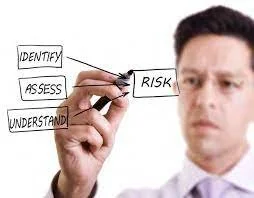2022 / highlighting patterns in heterogeneous risk data
National security
The Project
Topic: Risk analysts looking for patterns in large amounts of unconnected information
Goal: Reduce decision making time and effort, and get more value from data by combining different info sources
Strategy: A common, dynamic threat picture that visualizes data from multiple sources in a way that highlights connections that would otherwise go unnoticed
background
The client performs analyses critical to national security, and a recent increase in workload had led to a need to (1) increase the group’s throughput while also (2) squeezing more value out of data available to them. I was on a cross-company team composed of developers, risk engineers, and myself.
We had a set of unrelated back-end tools that, combined, would support a solution. However, there was no existing UI that tied all those tools together. Nor was there any sort of visualization or user interface that the analysts currently used. Hence, they needed something new.
CONsTRAINTS
This project was a demonstration in compromise. The clients needed an interactive prototype that (1) demonstrated how a new solution could greatly reduce the time required for risk analyses while also increasing the ability to detect risks, (2) looked “real” enough to convince the group’s funding agency that the solution was both feasible and realistic, and (3) could sufficiently demonstrate the solution concept within a few minutes.
There were back-end tools involved in the solution, but in this stage, the front-end design would be the showcase for all of the above. However, the client had a very short deadline, so I had only 100 hours over 5 weeks to do all the user research, design, and prototyping necessary to produce it.
task analyses, page flows, early wireframes (unreadable by necessity)
Process
The first step was to set client expectations. Their ambitions exceeded their timeline, so we worked with them to see this project as an initial step in a much larger effort — a means to form and demonstrate the concept for a solution.
The second step was to work with the client and my own team to tightly scope the UX effort. Because of the funding and deadline, compromises in both research and design would be unavoidable. I tried to mitigate the negative impact of those compromises by working with both groups to define a small and very specific scenario — an incident, a sequence of activities in response to that incident, and an end point.
With that in hand, I was able to focus the abbreviated user research effort on uncovering only those user actions, decisions, and needs within that scenario. Similarly, focusing just on that scenario meant that I could design only those parts of the solution that would be encountered during it, and that I needed to add only enough interactivity to the prototype to enable the scripted sequence of events. The prototype should thus give the illusion of a real product, as long as the script was followed.
it worked!
Somewhat surprisingly, that process was entirely successful. I had only a few hours available for user interviews, and I had to squeeze both the design and prototyping of a new UI concept into the remaining hours. But I was still able to produce a prototype that the client loved and which met their needs at this stage.
The actual design is confidential, so I can’t show it, but here’s a blurry image.
Note: I didn't have to worry about a styleguide or branding in this project. To save time, then, I built the prototype in Figma so that I could use one of its many design templates. Figma also had just enough interactive capabilities for what I needed. In other circumstances, I might have used Axure.
The prototype
Challenges, strategies, and lessons
This project introduced perhaps the biggest set of compromises I have had to make in a project. Both the research and the design effort were far from ideal. However, the management of client expectations, combined with a tight scoping and a focus on a single scenario, enabled us to produce something that actually pleased the client — and to do so within both time and budget.
When money and time are limited, scope well.




